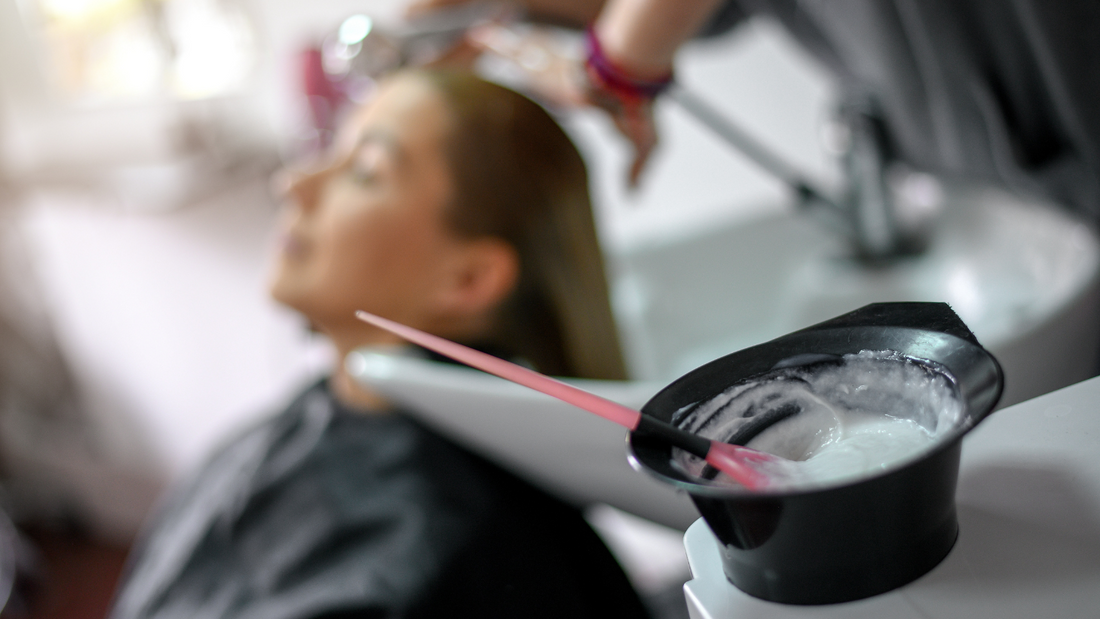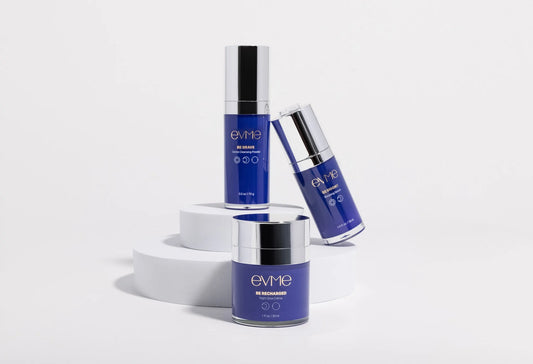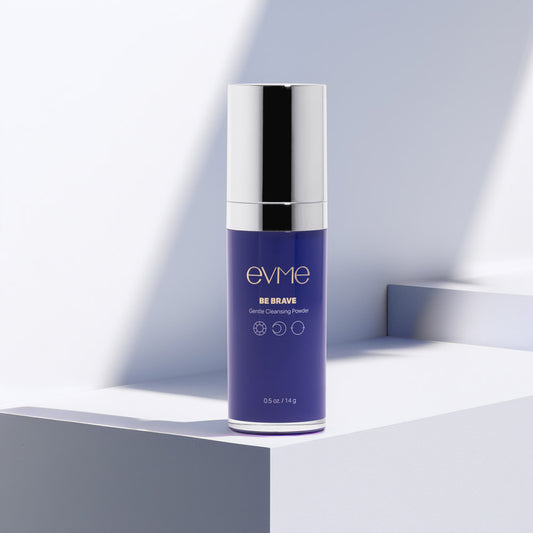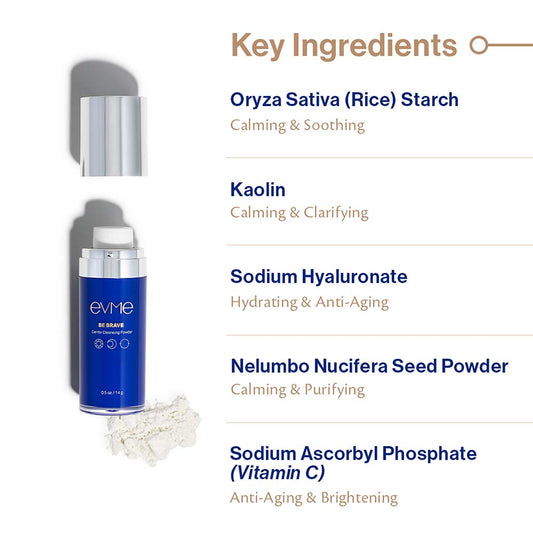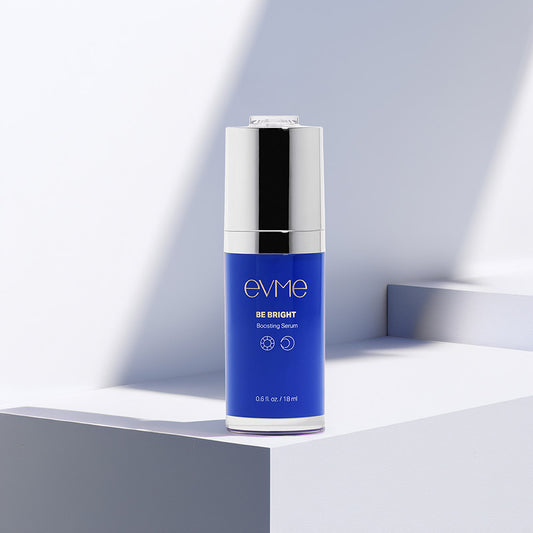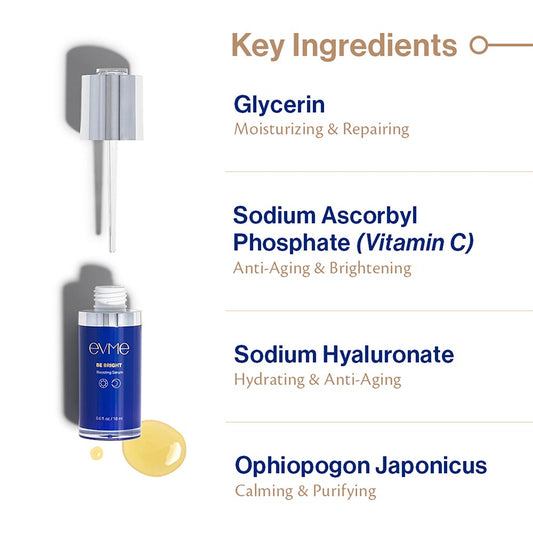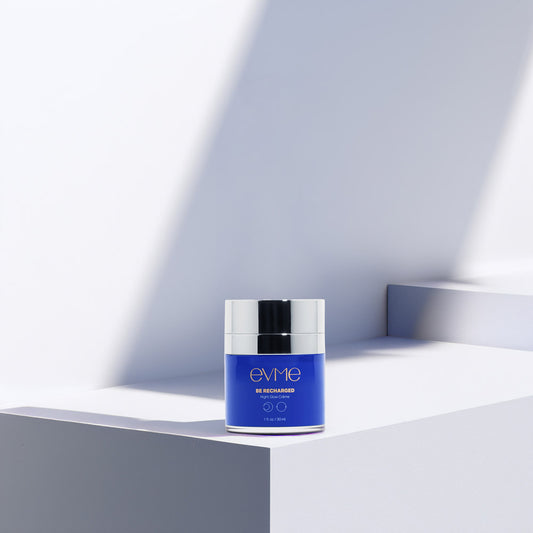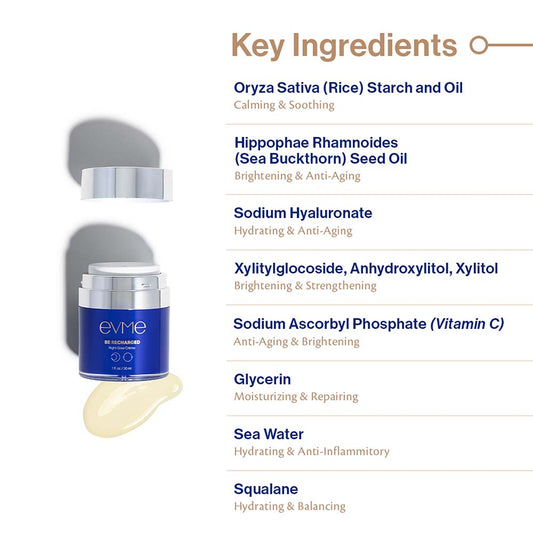Try Evme, allergist-created luxe skincare for sensitive and allergic skin.
Shop All ProductsSurprising facts about product regulation and labeling in the personal care industry
February 15, 2023

Back To Articles
When searching for products for my patients with allergic skin, I regularly scan ingredient labels and research ingredients to figure out what would work for my patients. Often, I have been disheartened with the choice of ingredients in most products, even in items labeled as “hypoallergenic”.
When I first started navigating through the personal care product industry, I was shocked to find out some of the alarming details about regulation and labeling. As a scientist, I had a lot of questions and was disappointed with the answers I was getting.
Today, I want to share some of the surprising things I found out along the way.
Did you know that most personal care products are not regulated AT ALL by the FDA or any other agency Sunscreen, which is one of the rare regulated items, has minimal regulatory requirements though it is more regulated than most general cosmetic products.
There is no-one checking on products labeled as “hypoallergenic”, “clean”, or “natural” and some brands are taking advantage of this scenario. Consumers generally believe these labels mean something, but unfortunately, you still have to be a savvy consumer to know the truth.
Did you realize that there can be ingredients hidden in formulas that don’t have to be listed on the label?
Do you know what kind of testing is done to products before they come to market?
Do you know how your ingredients are sourced and processed?
I am here to help!
Let’s dive into some of the interesting things I found out.
1) Not every ingredient is listed on the label
The ingredients names listed on a label are all names in a database called the INCI system. INCI (International Nomenclature Cosmetic Ingredient) is a naming system that helps to standardize names for ingredients. I was surprised to find out that some ingredients have multiple components that are not listed in their INCI and are not required to be shown on the label.
For instance, you may find a vendor selling an ingredient whose INCI is glycerin. When digging in deeper with the vendor, I asked for a compositional breakdown which tells you all the “extra” components used in the production of this ingredient. I was shocked to sometimes see 3-4 other ingredients listed out in a compositional breakdown that would not need to be listed officially on a label. I couldn’t help but wonder if this was why some of my patients were reacting to products when they thought they were ok with all the ingredients listed on the label.
Individual fragrance components can also be hidden in a label. Under U.S. regulations, fragrance and flavor ingredients can be listed simply as “Fragrance” or “Flavor”, not identifying specific ingredients. This can be very difficult for those with allergies and sensitivities unless you completely avoid products with any fragrance or flavor in them (that’s really difficult to find!). It’s also important to note that some brands do not consider essential oils or other ingredients that have a natural scent to be considered “fragrance” and will include those in the formula, but still lead consumers to believe that the product is “fragrance-free”.
2) Only very basic testing is done prior to selling product
There isn’t much of an industry standard here, but most brands do a basic microbiology test on their formulas before they go out to market. That’s it. Safety and stability tests are not required. This was really shocking to me! As a physician, I made sure we went above and beyond this in making Evme products.
3) You can’t tell enough about an ingredient just by it’s name
From reading an ingredient label, you can only tell what the chemical compound name is, but you will have no idea if that ingredient is synthetic or natural, or where and how it was sourced and processed. But it’s important to be aware of sourcing and processing of ingredients so we can understand what other possible exposures are built into the ingredient.
Let’s take an ingredient that can be sourced from a variety of natural foods or sourced from other areas that are not food related. If you have food allergies or sensitivities, knowing how this ingredient is sourced could really matter to you. There may be varied amounts of the source material in the ingredient that could cause you to react.
With processing, there may be solvents, alcohols, and other chemicals used to process the ingredient (and still be in small quantities in the final product), which may not be suitable for those with sensitivities or allergies.
New regulation changes
There is a new FDA regulation in the beauty/cosmetic industry that will go into effect at the end of 2023 called MoCRA (Modernization of Cosmetics Regulation Act of 2022).
This includes:
- Mandatory facility registration for manufacturers (including Current Good Manufacturing Practice Requirements)
- A catalogue of product listings including the place of manufacturing, the cosmetic category, and the product’s ingredients (including any fragrances, flavors, or colors).
- Reporting of adverse events for a limited period of time
- Reporting that shows a cosmetic product is safe, with reasonable certainty (I have no idea what this means and there are no specifics or guidelines on this)
This new regulation doesn’t exactly speak to the quality of ingredients and will not be necessary prior to selling product. It’s not clear who’s going to be checking and how. This is clearly a step in the right direction, but still doesn’t address the fact that there are many dubious ingredients out on the market right now that may continue to be used. This is a far cry from the type of regulation that is seen in other countries, like the EU for example, which bans over 1600 ingredients, and keeps a discerning eye on ingredients used in the beauty industry.
We have to bring more science and regulation into this cosmetic world! We need brands to be held accountable for what they call hypoallergenic and we need better transparency from the industry to fully understand where our ingredients are coming from and what they are constituted of.
At Evme, not only did we do extensive testing on our products before release to the market (including patch tests for reactivity, epiocular tests to test safety around the eyes, clinical efficacy studies, and detailed microbiology and stability testing), but we are also fully transparent with our ingredients, vetting everything from the sourcing and processing of ingredients all the way to manufacturing of the final product. We dug deep and found the very best ingredients to make the highest quality products.
Recommended articles
close
Evme Sans-Allergenic Skincare Products
- Choosing a selection results in a full page refresh.



